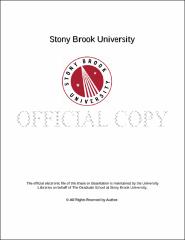| dcterms.abstract | The inherently finite quantity of fossil fuels has triggered the search for alternative renewable energy sources. Therefore, in this thesis, we have synthesized various types of high quality nanomaterials, including metal alloys, noble-metal-based core-shell structures, and lanthanum-doped fluorides with welldefined shapes as well as controlled chemical compositions, to demonstrate both morphology-dependent and composition-dependent relationships between nanostructures and their resulting electrochemical and/or photo-physical properties, with potential applications for fuel cell and solar cell configurations. In terms of exploring plausible electrocatalysts to replace expensive and scarce platinum (Pt), a series of one-dimensional (1D) ultrathin (d ~ 2 nm) Pd1-xNix and Pd1-xCux nanowires with controllable chemical compositions have been synthesized. These nanowires have exhibited a volcano-shaped relationship between their compositions and corresponding electrocatalytic activities towards the oxygen reduction reaction (ORR) and the formic acid oxidation reaction (FAOR), respectively. Moreover, after deposition of a Pt monolayer (PtML), these Pt~Pd1-xMx (M = Ni or Cu) nanowires evinced outstanding catalytic performance towards various reactions, including the oxygen reduction reaction (ORR), the methanol oxidation reaction (MOR) and the ethanol oxidation reaction (EOR), thereby proving the feasibility, promise, and viability of such hierarchical 1D ultrathin motifs. As a follow-up topic, we have probed the exact structure of PtML~Pd9Au ultrathin nanowires, a key ORR catalyst candidate, by combining theoretical calculations, spectroscopic techniques, and electrochemical results. Through X-ray absorption spectroscopy (XAS), an Au surface segregation phenomenon was successfully demonstrated, a finding also suggested by the collective results from both DFT modelling and electrochemical results. In terms of solar cells, the incorporation of upconversion materials such as lanthanum-doped NaYF4 has become one of the key approaches to harnessing a broader range of the solar spectrum, thereby improving the overall efficiency. Herein, we report on a straightforward hydrothermal synthesis, in the absence of any surfactant, to readily synthesize NaYF4 nanocrystals with various shapes, including 0D (nanoparticles), 1D (nanorods), and 3D (nanowire-bundles). Upon formation of a class of NaYF4-CdSe quantum dot (QD, utilized as a light absorber) heterostructures, incorporating all of these distinctive constituent nanomaterials, we have observed tunable, structure-dependent energy transfer behavior. | |

